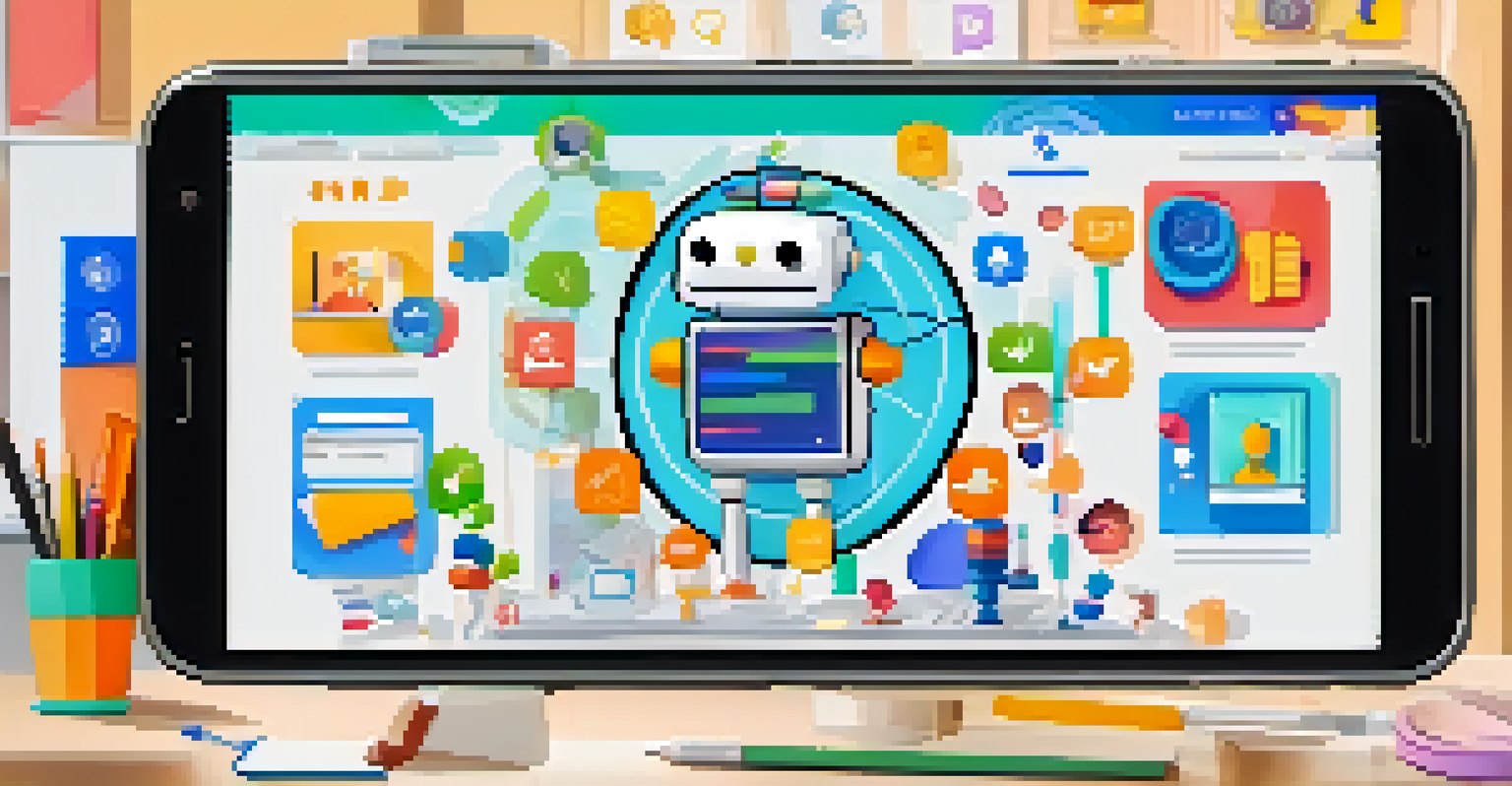AI's Role in Facilitating Parent-Teacher Communication Systems

Understanding AI in Education Communication
Artificial Intelligence (AI) is becoming a game changer in various fields, including education. By automating routine tasks and streamlining communication, AI helps bridge the gap between parents and teachers. This technology allows for real-time updates and personalized interactions, making it easier for parents to stay informed about their children's progress.
Artificial Intelligence is the new electricity.
Imagine receiving a notification on your phone as soon as your child submits an assignment or grades are posted. This instant communication fosters a collaborative environment where all parties are engaged. AI tools can analyze data from various sources, ensuring that the information shared is accurate and relevant.
In essence, AI acts as a supportive partner, enabling a smooth flow of information. With this technology, parents can feel more connected and involved in their child's education, enhancing the overall learning experience.
Automated Updates Keep Parents Informed
One of the significant benefits of AI in parent-teacher communication is the automation of updates. Schools can utilize AI systems to send automated messages about important events, deadlines, or concerns directly to parents. This eliminates the need for time-consuming phone calls or emails, allowing busy parents to stay in the loop effortlessly.

For instance, if a teacher needs to remind parents about an upcoming parent-teacher conference, an AI system can send out personalized messages based on each child's schedule. This targeted communication ensures that parents receive the information that matters most to them, saving everyone time and effort.
AI Enhances Parent-Teacher Communication
AI streamlines communication between parents and teachers by providing real-time updates and personalized interactions.
Moreover, automated updates can be customized to cater to different languages or learning needs, making information accessible to all families. As a result, parents can feel confident and informed about their child's educational journey.
AI-Powered Chatbots for Instant Responses
AI-powered chatbots are revolutionizing how parents can communicate with teachers and school staff. These intelligent systems can answer frequently asked questions, provide information on school policies, and even schedule meetings. By offering instant responses, chatbots significantly reduce the wait time for parents seeking assistance.
The greatest danger in times of turbulence is not the turbulence; it is to act with yesterday's logic.
Imagine a busy parent who has a quick question about homework assignments. Instead of waiting for an email response, they can chat with an AI bot that provides immediate answers. This level of accessibility enhances parent engagement and ensures that concerns can be addressed promptly.
Furthermore, chatbots can operate 24/7, allowing parents to seek information at their convenience. This flexibility reinforces the idea that education is a partnership, empowering parents to take an active role in their child's learning.
Personalized Communication through Data Analysis
AI's ability to analyze vast amounts of data allows for personalized communication between parents and teachers. By examining student performance, attendance, and behavior, AI systems can generate tailored reports that highlight areas of strength and improvement. This targeted approach makes conversations between parents and teachers more meaningful.
For example, a teacher might receive insights suggesting that a student excels in reading but struggles with math. This information can prompt discussions that focus on how parents can support their child's learning in specific subjects. As a result, the communication becomes more focused and productive.
Automated Updates Keep Parents Informed
Automated AI systems deliver timely messages to parents about important school events, ensuring they stay engaged with their child's education.
Personalized communication fosters a deeper connection between parents and educators, creating a supportive ecosystem for the child's growth. It ensures that conversations are not just about general updates but are also rooted in each child's unique needs.
Enhanced Engagement through Interactive Platforms
AI is also paving the way for interactive platforms that facilitate engaging communication. These platforms can host virtual meetings, discussions, and even workshops where parents and teachers can collaborate on educational strategies. Such engagement not only strengthens relationships but also builds a sense of community within the school.
Consider a scenario where parents can join a virtual workshop on effective study techniques for their children. With AI-driven platforms, teachers can share resources, answer questions in real-time, and create a collaborative learning environment. This approach empowers parents to take an active role in their child's education.
Moreover, these interactive platforms can provide feedback loops, allowing parents to share their thoughts and experiences. This two-way communication is vital for fostering a partnership that benefits students and builds trust among all stakeholders.
Addressing Concerns with AI-Driven Analytics
AI-driven analytics can help identify potential concerns in student performance or behavior before they escalate. By continuously monitoring various data points, AI can alert educators and parents to patterns that require attention. This proactive approach ensures that issues are addressed early, fostering a supportive environment for students.
For instance, if a student's grades begin to decline, AI can analyze the data and suggest interventions, such as tutoring or additional resources. Teachers can then communicate these insights to parents, creating a united front in supporting the child's educational journey.
Data Analysis Enables Personalized Support
AI's ability to analyze data fosters personalized communication, highlighting students' strengths and areas for improvement to enhance educational outcomes.
This collaborative approach not only addresses concerns but also reassures parents that their child's well-being is a priority. By working together, parents and teachers can implement effective strategies that lead to positive outcomes.
Building Trust through Transparent Communication
Transparency is key to fostering trust between parents and educators. AI can facilitate transparent communication by providing access to real-time data regarding student progress, attendance, and classroom activities. This openness encourages parents to feel involved and informed about their child's education.
For example, a parent can log into a school platform to view grades, assignments, and teacher comments at any time. This accessibility empowers parents to engage in meaningful conversations with their children about school, reinforcing the importance of education.

Ultimately, when parents have the tools and information they need, it builds trust in the educational system. This trust leads to a more collaborative relationship, benefiting both students and the broader school community.
Future Prospects: AI in Education Communication
As we look to the future, the role of AI in parent-teacher communication is only expected to grow. Emerging technologies will likely offer even more innovative solutions that enhance engagement and streamline communication. Schools that embrace these advancements stand to benefit greatly from improved relationships with families.
For example, we might see AI systems capable of predicting potential learning challenges based on historical data, allowing for even earlier interventions. This proactive approach can lead to more tailored educational experiences for students, ensuring they receive the support they need to thrive.
In conclusion, the integration of AI into parent-teacher communication systems is paving the way for a more connected and informed educational environment. By embracing these technologies, we can work towards fostering a supportive community that prioritizes student success.